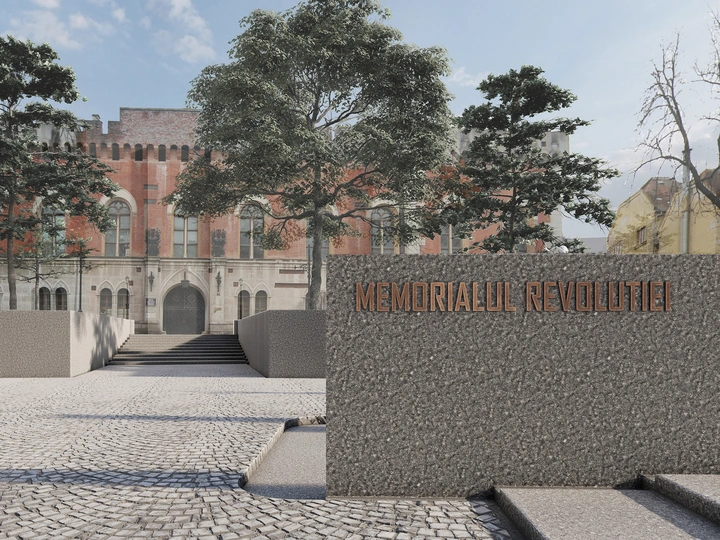Revolution Memorial

Andrei is an architect living and working in Timisoara, with a strong interest in art history, practicing street art from a young age. Currently working in the architecture studio Andreescu&Gaivoronski, with projects where all scales are approached but with a focus on competitions. Some of his interests in the field are the subject of memory in public space, art in public space and landscaping.
The project is questioning the way in which we are relating to an important event from our recent history, the fall of the Iron Curtain, through the subject of memory in public space. How do we commemorate this moment, where and through which means? The chosen site has a powerful symbolic connection to what the Romanian Revolution means. In December 1989, more than 100.000 people gathered there to win their freedom. Therefore, one of the premises of the project is to enhance the identity of this public space as liberty’s ground zero. Moreover, it focuses on creating a strong connection between the urban area and the underground intervention. The strategy aims to transform the underground passageway into a museum area and to rethink the public space around the idea of memory .The motivation behind the project was to generate an immersive space, a heterotopia (Foucault), where the visitor can have a one-on-one intimate experience with the project’s narrative. The architectural project is, before anything, a scenography that aims to create a specific atmosphere meant to serve as an environment in which the learning process can take place. The project narrative unfolds on a time-space axis, along which exhibition rooms emerge. There is a hidden side of the exhibition, inaccessible to the visitor, but visible throughout a series of viewfinders, screens and openings. This hidden part of the exhibition is made up of projections, interviews, dioramas and models, which aim to tell the narrative of the Revolution.
Thus, the memorial is a reflexion of the way in which we discuss the events of 1989 today. The curatorial project is based off of the multiple voices technique in which the narrative present itself though the interviews and testimonies of the participants. The viewer finds himself in the dark, thinking of the events that happened right above their head 30 years ago, trying to grasp their meaning.